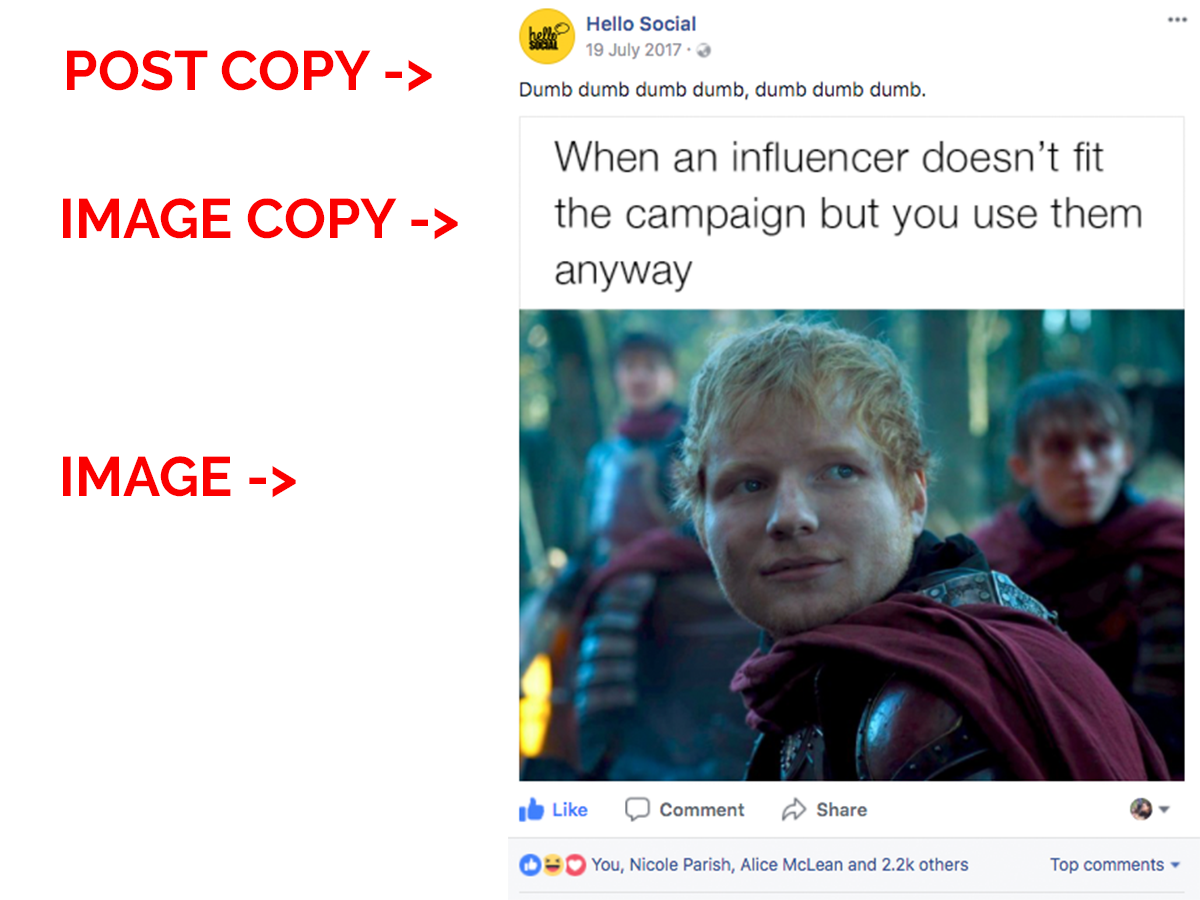The Majestic Social Media Meme & How Your Brand Should Use It
Should you be stepping outside the dreary confines of promotional posting, and get your hands dirty with some social media memes? Absolutely. Here's our guide!
A good meme can be an absolute goldmine for a business. They’re cheap to produce, constantly trending and a surefire way to boost engagement.
Let’s get one thing clear: memes are not for every brand. If you’re a funeral director, and are thinking about posting some hot “tag a mate” content, think again. Let’s first go over why they work.
Memes work when a funny relatable thought or action is paired with a relevant image or video. If your audience is having a “lol! That’s me!” moment, you’ve done it.

They work for brands because they can promote a product without coming across as an ad, they can give your brand positive PR through coming across as relatable and human and they can capture new audiences.
Think about the last meme you were tagged in. Were you following that page or brand beforehand? Probably not.
The trend of tagging friends in memes, means your content can reach new audiences for zero ad spend. How good.
WHAT IS IN A MEME?
The term ‘meme’ was first coined by ethologist and author Richard Dawkins in his book The Selfish Gene (1976). He intended it as a new kind of noun, as a term that conveyed the idea of a unit of cultural transmission, that was spread through copying or imitation.
Our modern day definition might be slightly less high-brow but the idea remains the same: copy an image, apply a cultural understanding and share it.
There are 3 parts to a meme.
The post copy, the image copy and the image itself.

All three parts should relate to one another and be immediately understood by the audience.
The meme format is immediately recognisable, and carries positive associations with a modern social audience. This means a meme can break through the noise of a Facebook feed to capture attention. And when you only have a microsecond to win somebody over enough to stop scrolling and engage, this can prove crucial.
BREAK IT DOWN FOR ME:
Create memes for your brand by taking a trending image (or established meme), news event or idea and make it relevant to your audience.
Here’s an example of where we took an established meme (Spiderman) and made it relevant to our audience (marketing managers and the larger social media community).

HOW TO DO IT RIGHT:
1: RELATABLE IDEA + IMAGE/VIDEO + BUSINESS INTEREST = BUSINESS MEME.
Take a relatable idea, like binging Netflix or loving avocado, pair it with an image you’ve either created or taken from popular culture, and make it relevant to your brand.
If you sell clothes for teenage girls, you don’t need to make memes that solely focus on shopping. You could boost your audience engagement by creating content about schooling, university or dating. If it’s relatable to your audience, it’s guaranteed to go well. But hey, that’s content marketing in a nutshell.

2: TRUST THE OPINIONS OF OTHERS.
Memes are for the masses. And hey, listen, test out a meme with others before posting. I know it’s hard to hear but your Zelda reference might only be funny to you.
3: TIME IT RIGHT.
Jump aboard trending memes as they emerge. Don’t recycle ideas that were done to death months ago.
Follow a variety of socially-forward channels, like Hello Social, so you can jump aboard the trends as soon as they emerge. We do a fresh meme every Wednesday that’s geared to our audience. Follow us here.

HOW TO DO IT WRONG:
1. COPYRIGHT.
If you are using somebody else’s image (celebrity picture, still from movie/tv show) and you’re putting money behind it, you could land in some legal hot water.
INSTEAD:
Create your own content using imagery you’ve bought or other assets where you own the creative licence.
An example of a brand that does this remarkably well is NSW Police Force, who routinely jump aboard trending memes (like when the Snapchat Hotdog went viral) and relate them to police work.

2: INSENSITIVE
Be cautious with what event or trending conversation your business tries to capitalise on.
Don’t be like Cinnabon, who famously tried to profit off Carrie Fisher’s death with this distasteful Twitter post.

One wrong move and you could go viral for all the wrong reasons.
If you’re looking for somebody to lead your content, or if you need an advised push in the right direction, feel free to reach out to Hello Social. Content production and planning is our bread and butter.
Let’s make some meme-ories.







